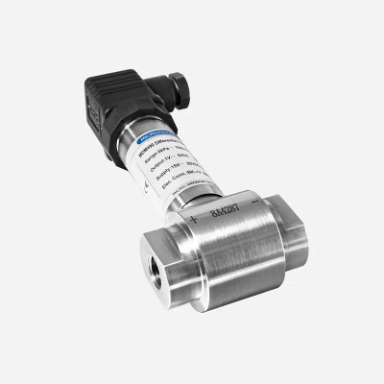The differential pressure transmitter is a widely used and highly effective pressure-measuring device. They are commonly used in many industries for their excellent durability over time, including in the oil and gas, petroleum, chemical, food, pharmaceutical, and paper manufacturing sectors. You can rely on this instrument for various purposes, including level sensing in condensers, collecting quantitative data on process performance, and keeping tabs on the throughput of individual components to detect any gradual shifts over time caused by dust accumulation and other contaminants.

What Is a Differential Pressure Transmitter?
A differential pressure (DP) transmitter is an electrical device or gauge with two components used to calculate the pressure difference between two points in a closed container (such as a pipe). The low-side pressure acts as a baseline against which the high-side pressure is measured.
There are high-side and low-side ports on the device. The value of a low-side or high-side is determined by whether the differential pressure reading is negative or positive. As long as the low side of the differential pressure transmitter is exposed to atmospheric pressure, you can use it as a gauge pressure transmitter. A differential pressure transmitter will have the following:
- An electronic housing
- A sensing element
- An electronic component
To electronically record the pressure exerted inside a pipe, differential pressure transmitters use a powerful automated module and sensory diaphragms, these configurations are assembled together to meet the needs of specific applications.
How Does a Differential Pressure Transmitter Work?
The differential pressure transmitter is an effective instrument and will provide you with years of reliability if used in the proper application. Silicon oil is placed between the two diaphragms and the die of a differential pressure transmitter to create a piezoresistive sensor that measures pressure differences.
Pressure on the die could be applied via silicon oil after the measured differential pressure between the two diaphragms is added together.
This differential pressure signal is converted to an electric signal by the sensor die, which is connected via wires to an amplifier circuit and uses the piezoresistive effect of the semiconductor. Because the differential pressure is linearly related to the signal output on the die, it is possible to obtain a precise measurement of the pressure difference. The differential pressure transmitter’s time-tested reliability and widespread application make it a future-proof technology.
Differential Pressure Transmitter Applications
Assessing the degree of process vessel clogging
The differential pressure transmitter could monitor the pressure differential along a process plant’s heat exchanger, filter, or chemical reactor. Also, on this application, you can use a differential pressure transmitter to assess the degree to which a water filter is clogged.
Measuring positive gauge pressure
When pressures higher than atmospheric pressure are present, DP instruments can double as simple and direct gauge pressure instruments. Connecting the “high” side of a differential pressure instrument to a process vessel through an impulse tube while venting the “low” side to the atmosphere causes the instrument to read the positive pressure in the vessel between the vessel and the atmosphere as a positive difference.
Absolute pressure measurement
The difference between the pressure of a fluid and a perfect vacuum is known as its absolute pressure, while the one between atmospheric air and a fluid’s pressure is known as its gauge pressure.
Therefore, any pressure over a total vacuum will be recorded as an increase. If you connect a differential pressure transmitter’s pressure-sensing element to a vacuum chamber, you may have yourself an absolute pressure-sensing instrument.
Inferring gas and liquid flow
The flow rate through a pipe is another common application of differential pressure transmitters. The force needed to overcome a fluid’s resistance as it passes through a pipe restriction is proportional to the mass and velocity of the fluid. For fluids with a relatively constant density, measuring the drop in pressure along a pipe allows you to infer the flow rate.
In most cases, a plate with an accurately placed hole in the center is used for this purpose and is referred to as an orifice plate, while the velocity of the moving fluid changes as it passes through this opening, resulting in a pressure drop.
Take Away
Differential pressure transmitters are convenient because of how simple their installation is. Currently available digital outputs and guidelines from today’s manufacturers are compatible with the vast majority of existing industrial control systems. When applied correctly, they are a dependable and low-maintenance method of measuring flow that can last for years.
A differential pressure transmitter has a long and illustrious history of service in many industries, while its simple and direct dependable construction guarantees its continued employment for the foreseeable future.
Interesting Related Article: “7 Manufacturing Challenges and How to Overcome Them“
